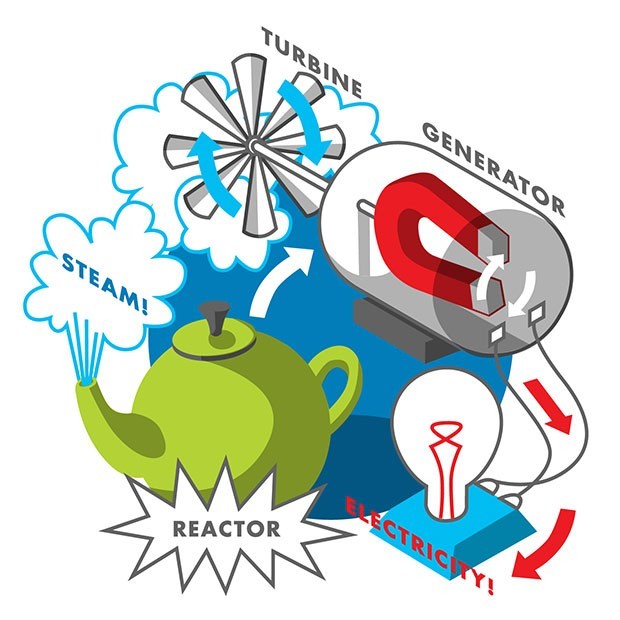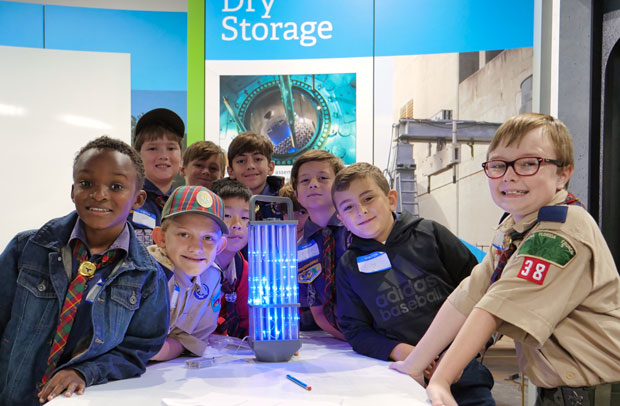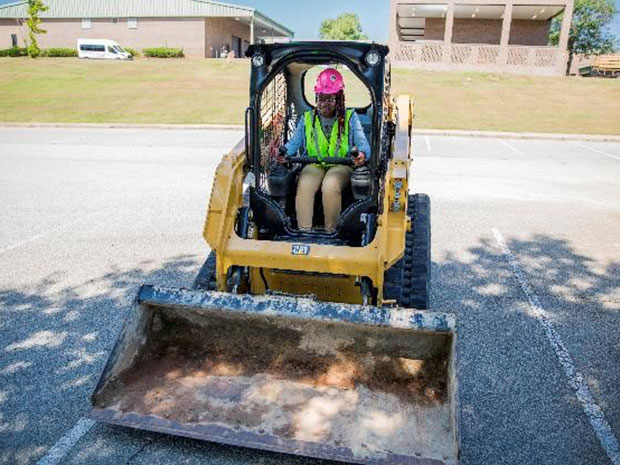The process of generating nuclear energy

Nuclear power plants generate electricity using the same engineering technology as conventional steam plants that burn fossil fuels.
The difference is the heat source that is used to make steam.
At fossil plants, a “boiler” is used to make steam, while at nuclear plants, reactors generate heat to create steam. The cycle is the same in all steam generating plants. The heat source generates steam, the steam turns turbines and the turbines power the electric generator. The rotation of the generator produces electrical current which is fed into a grid to deliver electricity to consumers.
Plants Farley and Vogtle use pressurized water reactors to generate electricity. Fuel rods in the reactor core contain uranium oxide pellets. The uranium atoms in the pellets undergo a “chain reaction”, where they split, or fission, and create heat. When water is pumped from the bottom of the reactor up around the hot fuel rods, it absorbs the heat without boiling because it is kept under high pressure, like a pressure cooker. This “superheated” water is sent through tubes in a steam generator where cooler water surrounds it and boils to steam. The two water sources remain separated from each other at all times and only the heat is transferred. The steam turns blades on a turbine generator causing it to spin a magnet inside a coil of wire. The motion causes electrons to move along the wire in a constant flow called an electric current. Cooling water from the cooling tower condenses the remaining steam and flows back to the cooling tower where excess heat is given off as a mist above the tower.
Plant Hatch uses a boiling water reactor to generate electricity. There, the coolant is pure water that boils inside the reactor vessel. The steam produced by the nuclear core is radioactive, but contained within the main steam and feedwater systems and does not leave the containment building. The resulting steam-water mixture proceeds through steam separators to a turbine located outside the reactor building where it turns a shaft connected to a generator to create electricity.
The reactor as a heat source is a simple machine with only one set of moving parts, and when in a steady state of operation, no moving parts at all. The moving parts are the control rods which are moved in and out of the reactor core (uranium fuel) to increase or decrease nuclear power. The heat produced in the core is the by-product of a sustained fission reaction. Fission occurs when free-travelling neutrons strike the nuclei of other atoms, causing them to split, while also freeing more neutrons.
The control rods regulate reactor power because they are made from neutron-absorbing material. When they are inserted in the core they absorb most free-travelling neutrons and prohibit them from striking and splitting other nuclei. If all the control rods are fully inserted into the reactor core, the reactor shuts down. When the control rods are withdrawn, more neutrons are free and more collisions occur, producing even more neutrons and increasing the power level.
The element boron is also a neutron absorber, and varying its concentration in the cooling water adjusts the number of neutrons available to produce fissions, thus controlling the power level. Boron is used to fine-tune reactor power or for shutting down the reactor during prolonged unit outages or refueling.
PWRs are designed to operate for 18 months between refueling outages, while BWRs operate for 24 months between refueling outages. Nuclear power is a safe, reliable, cost-effective way to produce electricity. Nuclear power adds diversity to our fuel mix, produces no greenhouse gases and will continue to play an important role in meeting the growing energy needs of Southern Company customers for years to come.

